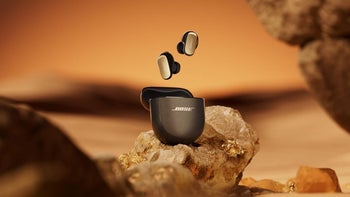Samsung Galaxy Note 4 and Nexus 6 (Snapdragon 805) performance review

It has been a long stay at the top for Qualcomm.
The company introduced its first Krait CPU core way back in 2012, and ever since then the Krait core has been the brain of most of the successful Android and Windows Phone devices. A custom creation, Qualcomm designed the Krait core under ARM’s architecture license, meaning that it only used the very basics that ARM provided like the instruction set, while for all else it was Qualcomm engineers who were charged with the task to carefully tweak performance to come with an efficient and powerful core.
Krait 450: the swan song for 32-bit
The latest big jump in performance for the Krait family of processors happened with the release of the Snapdragon 800, also known as the MSM8794, a chip that appeared on devices like the Samsung Galaxy Note 3, Nexus 5, and Sony Xperia Z1 in 2013. The Snapdragon 800 debuted the Krait 400 core (a very similar Krait 400 CPU core was later used in the Snapdragon 801), that in turn brought the increase in clock speeds - from about 1.7GHz in the previous generation Krait cores to 2.3GHz on the Krait 400. The main reason for this substantial boost in clock speed was the change in the manufacturing process. While earlier Snapdragon chips were made on the 28nm LP (low-power) node, the Krait 400 was the first to be made on a 28nm HPm (high-performance for mobile) node. At the same time, it’s worth keeping in mind that Qualcomm did not make any huge changes in the underlying Krait core architecture, leaving instruction parallelism on the same level.
The particular implementations of the Krait 450 on the Samsung Galaxy Note 4 and Nexus 6 run at up to 2.65GHz. We’re looking at the same 3-wide decode, 4-issue with 7 execution ports and 11-level deep pipeline architecture as in previous Krait cores. On board is also a 32KB of L1 cache (16KB Instruction $ and 16KB Data $), as well as 2MB of shared L2 cache.
All of this follows the ARMv7 instruction set. It’s worth pointing out that Snapdragon 805 is the last 32-bit high-end Qualcomm architecture, and as such it has a special place, as many tech geeks might be willing to wait a bit for the 64-bit ARMv8 implementations in Snapdragon 810. That forthcoming chip will also no longer use custom Qualcomm cores - instead, it will just use a Cortex A5x (A57/A53) setup.
The Krait 450 scores an average of around 1100 points on the single-core Geekbench test. We ought to point out that the single-core performance score is essential and arguably correlates best with real-life performance. The reason is that the use of multiple cores is a territory usually reserved for more demanding applications, and even though Android offers an excellent support for relating the load between cores, single-core performance is still critical. So how much of an improvement is the 1100-ish score of the Galaxy Note 4 and Nexus 6? Compared to a Krait 400 device like, say, the LG G2, which scores around 930. Keep in mind that there is a slight fluctuation in the scores because of the little variables that affect CPU performance in the daily grind. Still, a jump from a score of around 930 to 1100 is an improvement in the ballpark of a solid 18%.
Looking over to multi-core performance, the Krait 450-based Galaxy Note 4 and Nexus 6 score around 3270 points on Geekbench, while the Krait 400-running LG G2 averages 2750. Here, the improvement also measures to around 19%, which is - logically - consistent with the boost we saw in single-core performance. After all, both the Snapdragon 805 and the Snapdragon 800 use a quad-core setup.
Another key test that we’d like to pay attention to is Sunspider. This JavaScript CPU benchmark is one that most manufacturers optimize for, and variations in its results are even greater for a number of factors. Sunspider results are output in the milliseconds it takes to complete the test, and hence, a lower result indicates a faster device. The Nexus 6 scores in the 800ms vicinity, while the LG G2’s score stands at around 900ms zone. It’s hard to draw any hard conclusions from a test with such varying results as Sunspider, but we can see the slight advantage that the Krait 450 has in performance.
As for the Note 4, something strange is happening with the Sunspider results: when running the benchmark in Chrome (as we do for all Android phones), the score is a surprisingly poor 1100ms-ish, while when running the same test under Samsung's custom browser we get an iPhone-like score of around 380ms. It's hard to explain the difference except when we think about some low-level customizations that Samsung is doing to get the best Sunspider result possible. To better understand what's happening we ran a couple of other benchmarks to see whether this strange, nearly triple scale of a difference is present in other benchmarks, or if Samsung has indeed made some adjustments for Sunspider.
Not surprisingly, it turns out that the actual difference in performance between Chrome and the stock Samsung browser on the Note 4 is not that huge. Google Octane reports practically identical scores from Chrome (5514) and the Samsung browser (5603), while Mozilla Kraken reports a slight advantage for the Samsung browser (5500ish) over Chrome (6300ish). The conclusion to draw is that Sunspider might not be the most indicative test when it comes to CPU performance because of the optimizations phone makers like Samsung do for it.
Adreno 420 GPU: just what Quad HD phones ordered
The next crucial area of performance is graphics. With screen sizes of smartphones growing larger and larger, and the Note 4 and Nexus 6 in particular being bright specimens of this trend with their 5.7” and 6” displays, it’s only natural that many mobile gamers could be thinking of ditching their tablets altogether and switching to just one mobile device that can be a good fit for games.
Luckily, the Adreno 420 GPU in the Snapdragon 805 delivers very well on this front.
The Adreno lineup goes from the Adreno 3xx series used on the Snapdragon 600 (Adreno 320) and Snapdragon 800 (Adreno 330) up to Adreno 420 in the Snapdragon 805. Despite this abrupt change in naming, the evolution of the Adreno GPU has been a very gradual one. Just like the Adreno 330, the 420 is a 28nm part that features 128 ALUs while increasing the clock speed from 578MHz to 600MHz, a slight, 4% boost. For those looking at GFLOPS, this is an increase from 166.5 on the 330 to 172.8 on the 420.
The state of GPU benchmarking on Android is a much happier one than that of CPU testing, with a number of benchmarks providing various measurements to show how powerful GPUs are. We’ll limit ourselves to commenting on the on- and off-screen scores of GFXBench, and how they compare with other devices.
Looking at benchmark scores, it’s important to realize the difference between on and off-screen results. A needless reminder for many, we’d still like to point out that graphics performance is hugely dependent on the number of pixels that a game has to draw. Thus, a higher resolution of a device results in a proportionately increased load to the GPU. This is important when comparing on-screen results of various devices, as phones with Quad HD displays like the Galaxy Note 4 and Nexus 6 have a much tougher graphics task than, say, the Apple iPhone 6 with its 750 x 1334-pixel screen. If, however, what you’re looking for is to compare the performance of a GPU independently of the devices that it’s used in, the score you should be looking for is the off-screen test score.
The more intensive GFXBench Manhattan test shows a similar slight variance: 11.2 fps on the Note 4 and 12 fps on the Nexus 6. Clearly, these are two of the best performers when it comes to graphics and gaming in the Android world. At the same time, it’s worth once again saying that the Quad HD resolution takes its toll on GPU performance. This becomes obvious when you compare the Note 4 and Nexus 6’s on-screen graphics prowess with that of the Apple iPhone 6. The lower resolution of the iPhone 6 gives it more than double the on-screen graphics potential: 25.8 fps. We leave up to you, gamers, this choice - do you care for more resolution or maximized GPU performance? The Note 4 and Nexus 6 offer the former, while the iPhone 6 - the latter.
Conclusion
The grand finale of the Krait processor and the slow demise of 32-bit is clearly the main topic of discussion around the Snapdragon 805.
It’s the best out of Qualcomm’s 32-bit series, yet we’ve seen other companies like Apple and Nvidia set a new benchmark with larger cores that have a hugely better single-threaded performance. At this point in time, we’re more excited about the bigger changes coming with 64-bit Android than we can be excited about the gradual improvements in the Krait CPU. The Adreno GPU, on the other hand, shows that it is a powerful solution that will enter fierce competition next year with other rivals.
However, there is one big reason why Qualcomm should not be too troubled about the future - it has only grown its lead in baseband, after an early move into LTE and well-invested R&D dollars in multi-mode modems. MediaTek is the big rival in this segment, stealing away the market for cheaper devices, and we’re looking forward to seeing how will Qualcomm respond to that thread.
Follow us on Google News













Things that are NOT allowed:
To help keep our community safe and free from spam, we apply temporary limits to newly created accounts: